Rolland Despres
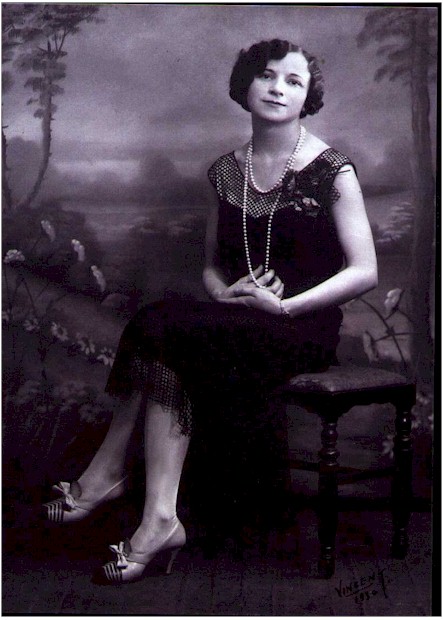
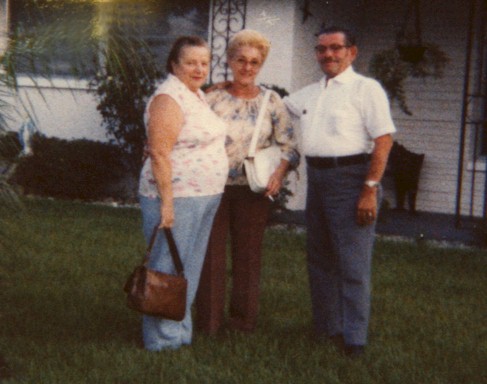 The first time I met Rolland and his wife Angie was in the winter of 1971. I was very young about eight years old when family took a trip to New Port Richie, Florida. I remember how strangely warm it was for February. It was my first trip to the sunshine state. As I recall, there were many orange groves and palm trees prevalent in the area. My most vivid memory of that trip was when I became very ill. I ran a high temperature and was sick to my stomach, an illness that my Aunt Yvonne Despres and my father would remind me of years after. After The Florida trip we returned to our home and grew up. I never really gave much thought to Rolland. It wasn’t until I joined the U.S. Navy in 1985, that I became aware of the military’s culture of pride, heritage, and respect. I had developed a unique perspective and appreciation for my family’s military heritage. I always knew I had relatives that served our country, but I never realized what they went through during the war. Noella Despres Grenier was my Grandmother and we were very close. I had a great respect for her, as well as a great respect for my father. This respect for these two important people in my life would influence me greatly. Rolland and Noella also were very close, even though she was six years older than him, he would always write and send her things from the war. One such thing was a unique(now very rare) German Paratrooper's Gravity Knife, which he "Liberated" off a German that he killed in Normandy.
The first time I met Rolland and his wife Angie was in the winter of 1971. I was very young about eight years old when family took a trip to New Port Richie, Florida. I remember how strangely warm it was for February. It was my first trip to the sunshine state. As I recall, there were many orange groves and palm trees prevalent in the area. My most vivid memory of that trip was when I became very ill. I ran a high temperature and was sick to my stomach, an illness that my Aunt Yvonne Despres and my father would remind me of years after. After The Florida trip we returned to our home and grew up. I never really gave much thought to Rolland. It wasn’t until I joined the U.S. Navy in 1985, that I became aware of the military’s culture of pride, heritage, and respect. I had developed a unique perspective and appreciation for my family’s military heritage. I always knew I had relatives that served our country, but I never realized what they went through during the war. Noella Despres Grenier was my Grandmother and we were very close. I had a great respect for her, as well as a great respect for my father. This respect for these two important people in my life would influence me greatly. Rolland and Noella also were very close, even though she was six years older than him, he would always write and send her things from the war. One such thing was a unique(now very rare) German Paratrooper's Gravity Knife, which he "Liberated" off a German that he killed in Normandy.
Rolland was born in Princeville, Canada on April 13, 1917. A French Canadian by birth he moved to the United States in 1924 with his parents, his brothers Armand, Morris, Roger, Jean, and his Sister (my Grandmother) Noella. The family settled in the Philadelphia area. Rolland was a very personable fellow always quick with a joke or a smile. He got along with everyone he came in contact with. He attended only four years of grade school before he quit and had to work to help support the family. All the children had to support the family, times were tough during the depression, and especially for an immigrant family that spoke very little English. His father Alondais Despres was near blind, and his mother Regina Despres had two strokes before he was the age of 25. Rolland found factory work as a Metal-Hardener. He would heat treat metal bars in a special oven for use in manufacturing gears and automotive shafts. He worked for the Electric Truck Company in Philadelphia making $39.00 a week as a laborer. While in Philadelphia ,he met and married the former Miss Angeline Tucci in November of 1942. Rolland was drafted as were many of the young men his age in the spring of 1943, when he received notice from his selective service board to report for duty. Rolland's life was about to change.
Processing Center New Cumberland, PA
Induction and Basic Training
Rolland was inducted into the army on August 13, 1943 he reported to the army processing center in New Cumberland, Pa. Rolland only stayed there for a few weeks. Processing involved physical exams and aptitude tests to determine what the Draftees would best serve as. Once he was processed, he was sent to basic training and then heavy weapons training at Camp Croft near Spartanburg, South Carolina. Camp Croft was a Infantry Replacement Training Center (IRTC). Camp Croft was established in January 1941 as an Army training facility. The camp consisted of two general areas: a series of training, firing, and impact ranges, and a troop housing area with attached administrative quarters (approximately 167 acres). The firing ranges at Camp Croft consisted of pistol, rifle, machine gun, mortar, anti-aircraft, and anti-tank ranges. At Camp Croft Rolland leaned how to be a soldier. He learned infantry tactics and how to fire and take care of the Browning 30 and 50 caliber machine guns. Also, while here he earned his Citizenship and became Naturalized.
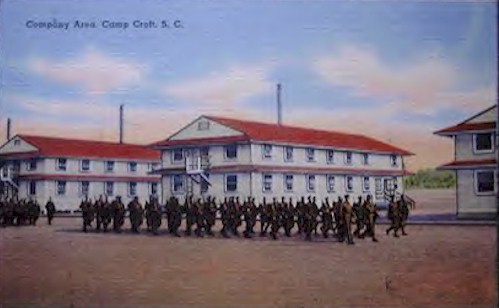
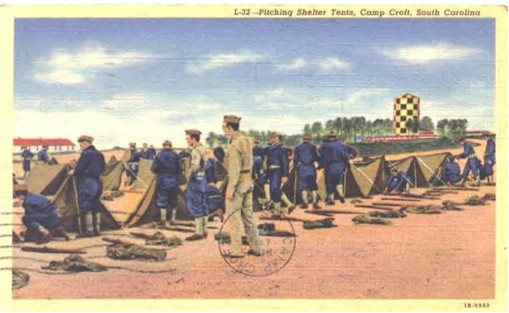
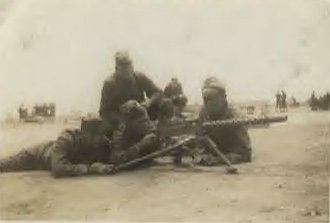
Camp Croft, Spartanburg, SC
He remained there for many months and then received orders to transfer to England as a replacement Rolland was assigned to the 83rd Infantry Division 4th platoon (Heavy Weapons Platoon) of B Company in the 331st Infantry Regiment, with the Military Occupation Specialty or MOS of Machine gunner. He was assigned to a squad of three men.
83rd INFANTRY DIVISION- THE THUNDERBOLTS
World War I
The 83rd Infantry Division was originally formed at Camp Sherman, Ohio on 13 August 1917. The majority of the men came from Ohio with some from West Virginia. The division emblem was identified by black triangular patch with gold superimposed Letters, O, H, I, O – The division was then made up of four regiments the 329th, 330th,331st and the 332nd. In June 1918, the division went to France where it was designated a Depot Division and furnished replacements for other divisions that had high casualties in combat. Some detached units earned commendations for their efforts in the Aisne-Marne, Meuse-Aisne and the Meuse-Argonne battles. One regiment the 332nd, with attached medical and supply units, was sent to the Italian front in July 1918 in response to urgent requests from the Italian Government. The 332nd was the only U.S. Army unit to be sent to the Italian front during the war. Its principal mission was to build up the morale of the war weary Italian army, while depressing the morale of the Austrians army. It accomplished this by creating the impression that a large force of Americans had reached that front and was preparing to enter the battle. The regiment was first stationed near Lake Garda, where it trained in mountain warfare. Necessary due to the entire region was mostly mountainous. Early in October the regiment moved to Treviso, behind the Piave River Front, where it was assigned to the Italian 31st Division. In a grand scheme to deceive the enemy of it’s size, the doughboys staged a series of marches. Each battalion, with different articles of uniform and equipment, left the city by separate road, circulated during daylight hours in exposed positions, and then returned inconspicuously to Treviso after nightfall.
On October 24th the Italian Vittorio-Veneto offensive began. The Italian 31st Division with the 332nd Infantry attached was in reserve. After a major assault the 31st Division along with the 332nd pursued the fleeing Austrians. On October 29th as part of the British XIV Corps of the Italian Tenth Army; the American regiment formed the advance guard of the corps. On November 3, after several long marches, the 332nd Infantry established contact with an enemy rear-guard battalion which was defending the crossings of the Tagliamento River near the village of Ponte-della-Delixia. On November 4th the 2nd Battalion crossed the Tagliamento on a narrow footbridge and after a brief struggle captured the Austrian positions. Continuing to move forward along the Treviso-Udine railroad, the 2nd Battalion occupied the town of Codroipo where it took possession of large stores of munitions and supplies. In this, their only offensive operation, the 332nd Infantry had one man killed and four wounded. At 3:00pm on November 4th the armistice between Italy and Austria-Hungary became effective, with the leading elements at the village of Villorba. The American troops later formed part of the Allied force stationed in Austria and along the Dalmatian coast in Yugoslavia. The 1st and 3rd Battalions were at Cormons near Gorizia. Late in November, 1st Battalion was ordered to go to Treviso and the 3rd Battalion to Fiume, Austria. The 2nd Battalion was stationed at Cattaro, Dalmatia and a detachment from it was sent to Cetinje, Montenegro. In March 1919 the regiment was assembled in Genoa and by April 4th its last elements embarked from that seaport and Marseilles for the United States. The 83rd division was sent back to Camp Sherman, Ohio and demobilized in October of 1919. For more on the 332nd division in Italy click here.
World War II
December 7th , 1941 was the date of America's
Entry into World War II. The Japanese attack on Pearl Harbor obliterated
the U.S. Pacific Fleet. The U.S. Declared War on Japan on December 8th,
three days later Adolf Hitler the leader of Germany declared war on the U.S.
honoring Germany's Tri-partite Axis Pact treaty with Japan. After Pearl Harbor the U.S.
Army began mobilizing all former Army divisions. The 83rd was again activated on August 15, 1942 at Camp Atterbury,
Indiana. Camp Atterbury was home to many divisions that were reformed during the war.
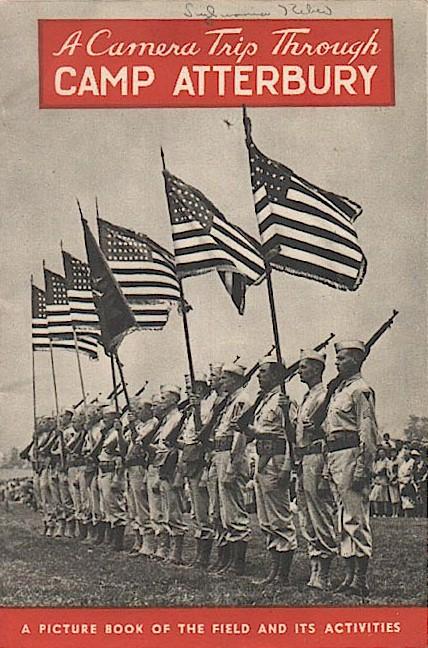 The Division was re-activated at Camp Atterbury under command of Major General Frank W. Milburn.
The cadre, officers and noncommissioned officers who had received army
basic training at least once and who were assigned to the newly activated
division to assist in their organization and training, were on hand in camp a
month ahead of the activation day. Fresh
from civilian occupations of all types, From high schools and colleges, and
representing all of the forty-eight states, the men joined the 83d still
wondering what was in store for them. At
the reception center they had heard all the rumors, had taken the ribbing of the
Service Command "veterans", had withstood the jibes of the sometimes
overbearing Pfc's (who might just as well have been five- star generals so for
as their influence over us was concerned), and had even survived inoculation
after inoculation. From now on they
would be distinguished from reception and training center recruits by the
shoulder patch they would wear.
The Division was re-activated at Camp Atterbury under command of Major General Frank W. Milburn.
The cadre, officers and noncommissioned officers who had received army
basic training at least once and who were assigned to the newly activated
division to assist in their organization and training, were on hand in camp a
month ahead of the activation day. Fresh
from civilian occupations of all types, From high schools and colleges, and
representing all of the forty-eight states, the men joined the 83d still
wondering what was in store for them. At
the reception center they had heard all the rumors, had taken the ribbing of the
Service Command "veterans", had withstood the jibes of the sometimes
overbearing Pfc's (who might just as well have been five- star generals so for
as their influence over us was concerned), and had even survived inoculation
after inoculation. From now on they
would be distinguished from reception and training center recruits by the
shoulder patch they would wear.
The 83rd was now made up of the following units:
329th, 330th, & 331st Infantry Regiments
322nd, 323rd, 324th, and 908th Field Artillery Battalions
308th Engineer Battalion
308th Medical Battalion
83rd Reconnaissance Troop Mechanized
83rd Headquarters Company
783rd Ordnance Company
83rd Quartermaster Company
83rd Signal Company
83rd Military Police (MP) Platoon.
The 83rd Infantry trained throughout 1942 and held maneuvers in Tennessee from June-August 1943 when the division was assigned to Camp Breckinridge, Kentucky.
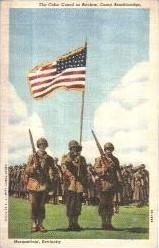 There the men were given advanced infantry training and prepared for overseas duty. The 83rd continued with their training until the spring of 1944. On April 6th, the 83rd embarked the S.S. George Washington from New York City for Liverpool, England under command of then Brigadier General Robert C. Macon. Macon had commanded a regiment in North Africa, before his promotion to Division Commander.
There the men were given advanced infantry training and prepared for overseas duty. The 83rd continued with their training until the spring of 1944. On April 6th, the 83rd embarked the S.S. George Washington from New York City for Liverpool, England under command of then Brigadier General Robert C. Macon. Macon had commanded a regiment in North Africa, before his promotion to Division Commander. The 83rd Infantry arrived in England on April 13, 1944. The 331st moved to Adderly Hall and then three days later to Tarporley, England for billeting.
For two months the Division conducted intensive training in the Midlands and Northern Wales. They then left for ports in Southern England in early June, 1944. The 83rd Division sailed across the English Channel in Liberty Ships and entered France from the 21st through 24th of June 1944. They landed at Omaha Beach on D-Day +15 and from there, they fought all across Europe.
The 83rd Infantry arrived in England on April 13, 1944. The 331st moved to Adderly Hall and then three days later to Tarporley, England for billeting.
For two months the Division conducted intensive training in the Midlands and Northern Wales. They then left for ports in Southern England in early June, 1944. The 83rd Division sailed across the English Channel in Liberty Ships and entered France from the 21st through 24th of June 1944. They landed at Omaha Beach on D-Day +15 and from there, they fought all across Europe.
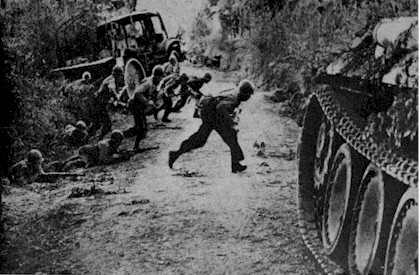 Normandy:
Baptism of Fire
Normandy:
Baptism of Fire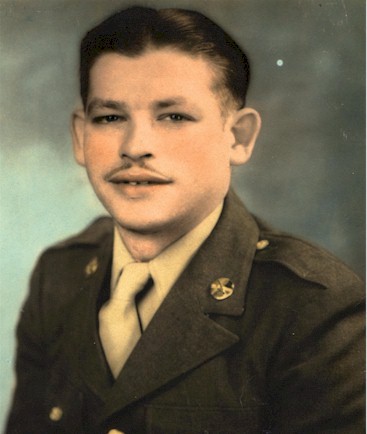 Rolland
Despres: Homepage
Rolland
Despres: Homepage Homepage
Homepage